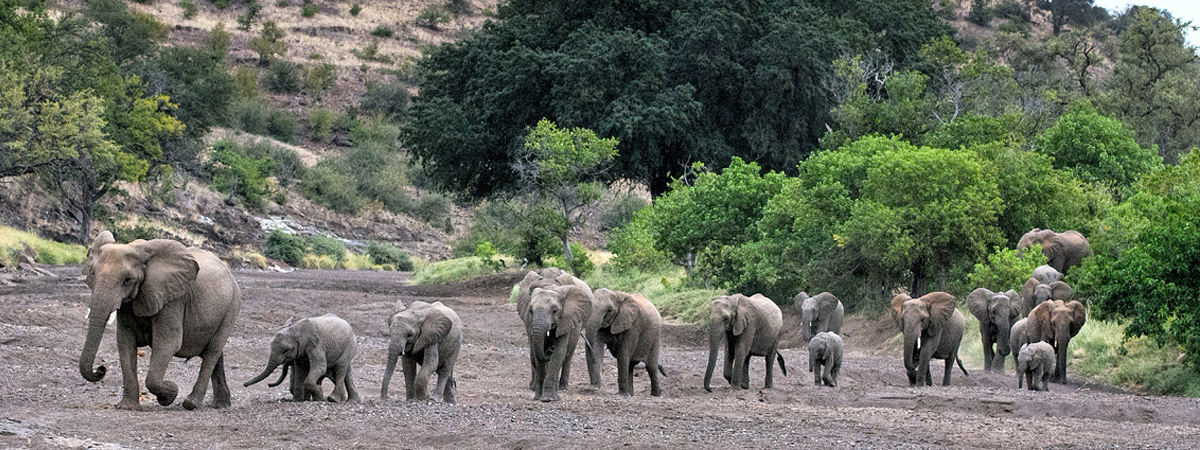Africa’s northernmost herd of elephants have long been a fascination of mine and I have followed the Mali Elephant Project with both with interest and anxiety as tribal conflicts and civil war have threatened their survival.
Earlier this year, as background to a trip I have been planning to visit Mali’s elephants, I carried out an interview with the Director of the Mali Elephant Project, Dr Susan Canney. We’ve spent the past few weeks editing the transcript of the interview and I was all set to post it online when I saw the most recent post on the Wild Foundation website by Vance Martin, the foundation’s president. I already knew from the few news stories I had been able to find online that the situation in Mali’s Gourma region was deteriorating again but I had not realised by just how much.
Mali peace deal in danger as fierce fighting flares
Therefore, before posting my interview with Dr Canney, I think it is appropriate to draw your attention to the seriousness of the threat facing Mali’s elephants.
In the past three years, the desert elephants of Mali have endured punishing drought, jihadist invasion, and sporadic poaching by bandits. But because of involvement of the local communities and the 500+ members of the “Brigades” that we have trained and deployed to patrol the area, the elephants have managed to survive. However, after a period of stability for these unique, desert-adapted elephants — following the previous spike in poaching, to which many of you responded with much needed support – they are again under the most intense siege ever experienced.
In the last two months some 24 elephants have been poached by bandits operating from the lawless north of the country, north of the elephant range and the river Niger [see here for a description of life in this area] and are from the same groups responsible for the general insecurity referred to in previous blog posts. These bandits have conducted rapid sorties south into the elephant range to target the elephants while the late dry season confines the elephants to the environs of Lake Banzena, the only permanent water accessible to elephants in the elephant range.This spike in poaching seems to have been associated with an increase in attacks from armed groups related to the peace process and the signature of the Peace Accord between the Tuareg rebels and Mali government. This was supposed to be signed in May, but the Tuaregs pulled out at the last minute.
Urgent action is already being taken to safeguard Mali’s elephants
a further quote from Vance Martin’s post.
50 additional Malian foresters have been recruited by the government to man the 10 new forester posts and are currently being trained (we need to provide additional trainers, and at least one vehicle and supplies to deploy them), and a radio-communications system (now funded!) is about to be deployed. In addition:
-
Our Field Manager, Nomba Ganame, has alerted the authorities, including the Parliamentary Committee on Wildlife, who in turn addressed the entire Parliament and Prime Minister yesterday–see the message below. The Council of Ministers will be briefed in more detail next week.
-
A new, younger and more proactive regional Army Commander has been appointed to the Gourma region, which includes the elephant range.
-
Three high level officers of MINUSMA (United Nations Multidimensional Integrated Stabilization Mission in Mali) arrived today at our office in Mali. MINUSMA is going to help Mali tackle poaching and conduct investigations to stop the poachers and their accomplices.
-
Our Project Director, Dr. Susan Canney, is returning to Mali now to meet with AFRICOM (The US Military Command for Africa), the new US Ambasador (Paul Folmsbee), and others… and also determine how MINUSMA, the Mali Army, and DNEF (Mali Department of Water and Forests) can be concretely coordinated to ensure protection.
In addition, the following message has been delivered to Mali’s Prime Minister and a full session of the Mali Parliament:
“Mr. Prime Minister, in the area of the environment, our wildlife has experienced an unprecedented level of degradation following the combined effects of recurrent and successive droughts, and human pressures (poaching, habitat destruction, grazing pressure, etc.). I refer to the particularly precarious situation of the population of elephants in the Malian Gourma and that the actions and measures necessary for their protection. From 24 December 2014 to the present day, there were more than 40 dead elephants in the Gourma Malian — at the only pool of water in Banzena and its surroundings including more than 24 killed by gunfire. The preservation of this population of elephants is now a national issue. This is the place to salute the efforts of The WILD Foundation and International Conservation Fund of Canada, an international partnership dedicated to the protection of the elephants and partner of the Ministry in charge of the environment.
Mr. Prime Minister for the survival of these elephants what urgent measures does your government intend to take in order to preserve this national and international heritage represented by the elephant population and capitalize on the efforts already undertaken by this partnership between the Government and our international colleagues?”
Please join our response to this tragic incident. The desert elephants of Mali face unusually challenging conditions, but we can save this remaining and most northerly herd of African elephants. Thank you!


